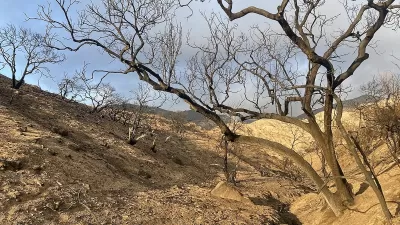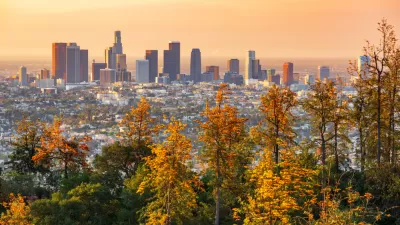A research study has found that increasing house sizes in the Los Angeles area have drastically reduced the number of trees shading the region's landscapes—regardless of geographic location of socioeconomic status.

Researchers with the USC Spatial Sciences Institute, led by Su Jin Lee, Professor Travis Longcore, Catherin Rich, and John P. Wilson have published a study finding that green cover for single-family home lots declined anywhere from 14 to 55 percent the Los Angeles area, with almost no single area spared from decline.
The study was published in the journal Urban Forestry & Urban Greening and announced in a press release on EurekaAlert.
As noted in the study, much of the "de-greening" of Los Angeles occurred as the city implemented a "Million Trees" campaign. The researchers began by taking an inventory of single-family parcels in the largest 20 largest cities in the Los Angeles basin, starting with the parcels that had added square footage to the home since 2007.
Baldwin Park led all areas in reduction, seeing a 55 percent loss of green cover on single-family residential lots in the mere span of nine years.
Other areas in the study that had at least 20 percent loss in cover included Pomona, Downey, Sylmar, Compton, and San Pedro/Port of Los Angeles.
The study noted one prominent exception: Pasadena, which maintained its verdant condition.
"[Study author] Longcore believes changing social views on the preferred size of single-family homes is the largest driver of tree cover loss, along with the increase in paved surfaces like walkways, driveways and swimming pools that come with home expansion," according to the press release.
FULL STORY: When single-family homes killed L.A.'s urban forest

Alabama: Trump Terminates Settlements for Black Communities Harmed By Raw Sewage
Trump deemed the landmark civil rights agreement “illegal DEI and environmental justice policy.”

Study: Maui’s Plan to Convert Vacation Rentals to Long-Term Housing Could Cause Nearly $1 Billion Economic Loss
The plan would reduce visitor accommodation by 25% resulting in 1,900 jobs lost.

Planetizen Federal Action Tracker
A weekly monitor of how Trump’s orders and actions are impacting planners and planning in America.

Wind Energy on the Rise Despite Federal Policy Reversal
The Trump administration is revoking federal support for renewable energy, but demand for new projects continues unabated.

Passengers Flock to Caltrain After Electrification
The new electric trains are running faster and more reliably, leading to strong ridership growth on the Bay Area rail system.

Texas Churches Rally Behind ‘Yes in God’s Back Yard’ Legislation
Religious leaders want the state to reduce zoning regulations to streamline leasing church-owned land to housing developers.
Urban Design for Planners 1: Software Tools
This six-course series explores essential urban design concepts using open source software and equips planners with the tools they need to participate fully in the urban design process.
Planning for Universal Design
Learn the tools for implementing Universal Design in planning regulations.
Caltrans
Smith Gee Studio
Institute for Housing and Urban Development Studies (IHS)
City of Grandview
Harvard GSD Executive Education
Toledo-Lucas County Plan Commissions
Salt Lake City
NYU Wagner Graduate School of Public Service





























